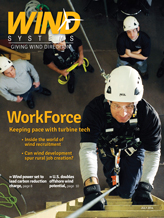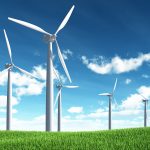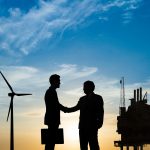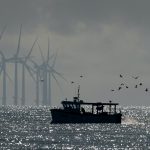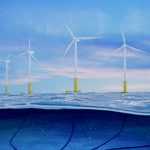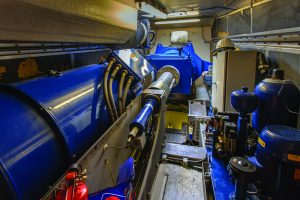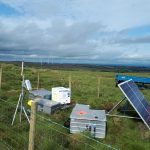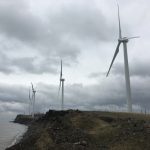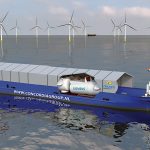The wind energy industry is the tip of the spear when it comes to fulfilling the societal needs for renewable energy. Wind energy has been a key factor in the United States and European Union’s plans for lower carbon emissions, and will continue to increase in prominence as the latest developments in technology continue to drive the cost of electricity down.
According to Ecotech Institute’s Clean Job Index, a database on clean jobs and other sustainability factors that affect the United States, jobs in wind energy are expected to grow 22 percent between 2010 and 2020. Figure 1
“Wind is proving to be a cost competitive energy source on its own. With the growth potential we are forecasting, it would be difficult to be anything but upwardly mobile in a career in wind energy,” said Walter Christmas, a wind energy technology instructor at Ecotech Institute.
But this growth, paired with the ever-changing list of trends and challenges in wind energy, requires an expertly trained high-tech workforce. Technical colleges, like Ecotech Institute, are tasked with staying on the cutting edge of technology while preparing students to enter a workforce that desperately needs them.
“When we see our graduates get job offers before they even graduate, that is a good indicator the industry is growing,” said Auston VanSlyke, a wind energy technology instructor at Ecotech Institute.
Growth and Trends
Many wind energy sites have come online this year. This is the type of growth that leads to increased hiring both in operations and maintenance positions, as well as management for facilities. The wind energy industry has also seen a move toward more specialist positions related to sub-systems and component diagnosis and repair.
“These are high-level technician jobs working closely with system engineers to monitor components such as gearboxes, generators, frequency converters, vibrations and oil analysis,” VanSlyke said.
The industry has also seen growth in offshore wind turbines, with the Department of Energy announcing another round of funding to three offshore pilot projects. The complexity of offshore wind will accordingly add complexity to the technology, commissioning, operation, and maintenance of these multi-megawatt power plants. Figure 2
In an industry that is constantly and rapidly changing, keeping up with the latest technological advancements is one of the biggest challenges professionals working in wind energy face. Implementing new methods and systems means learning new solutions for troubleshooting. When it comes down to it, downtime equals money, and the more you understand why a turbine faults, the better your bottom line will be.
Christmas cited the Voith hydrodynamic variable-speed gearbox used by DeWind, the double-fed induction generator and frequency converters, and the electric (variable frequency drive) pitch systems as just a few examples of the latest technology to gain prominence in wind energy.
But the rate of change is ultimately a good thing, as the industry tirelessly works to find new innovations in wind energy technology. In the coming years, Christmas expects improving gearbox reliability will become a focus — a development that would reduce downtime during major component replacements.
And the need for these innovations matters not only to engineers, but also to every professional within the industry. Figure 3
“As talented as the industry’s engineers are, often the simplest and most effective solutions stem from ideas created by technicians. It makes sense that the people who work closest to the machines should generate some creative solutions,” Christmas said.
Preparing Students for the Workforce
Identifying the skills needed for wind energy technicians is an on-going process. The industry often looks to resources like the National Renewable Energy Lab’s National Skills Assessment of the U.S. Wind Industry and The American Wind Energy Association (AWEA) Operations and Maintenance (O&M) Recommended Practices, to pinpoint what abilities and knowledge are needed.
Even when an aspiring wind technician leaves a college like Ecotech Institute, this is only the beginning of their training. They will then be trained on the turbine specific technology by the OEM or an on-the-job trainer. This learning cycle can last many years before a true level of technical competency is achieved on these highly automated wind power plants.
Advancements in technology are still outpacing even the best field technicians’ ability to keep up. Often, wind energy companies need to hire training firms to keep their employees abreast of the latest faults and how to troubleshoot them. Figure 4
To prepare individuals to enter this work environment, education programs for wind energy must focus on state-of-the-art technologies in its trainings and labs. Ecotech Institute makes it a priority to expose students to skillsets such as supervisory control and data acquisition (SCADA), PLC programing, advanced pitch systems, advanced converter theory, communications, power electronics, power equality, torque and tensioning tools, and the latest in climb and rescue techniques.
But most importantly, aspiring wind energy technicians must learn how to learn. To the uninitiated, the first day of on-the-job training can be overwhelming. Upon entering the workforce, these individuals must learn to absorb and digest the processes and technology being taught by their on-the-job trainers. In an industry defined by innovation and change, the most crucial skill someone can learn is the ability to adapt.
|
|
www.ecotechinstitute.com |
|
/EcotechInstitute |
|
@Ecotech_Inst |
|
|
EcotechInstitute |
















